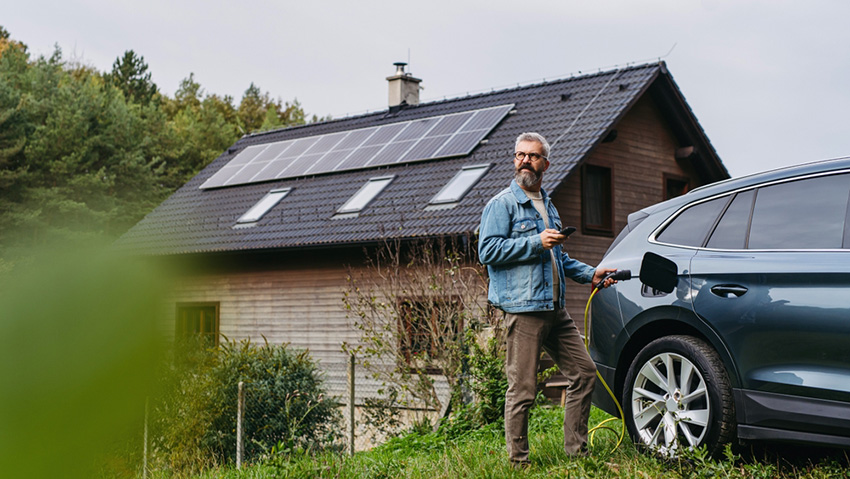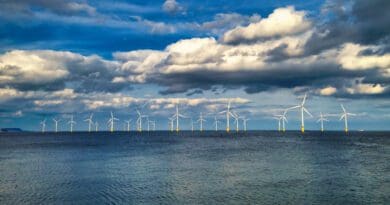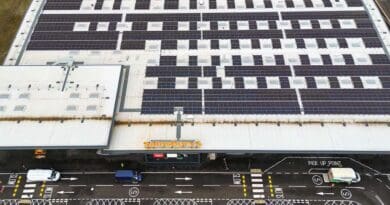Where the wind blows and the water flows: The rise of home microgeneration

British homeowners who are looking to reduce their carbon footprint—and their electricity bills—have long considered solar panels the go-to solution.
Yet there is a world of possibility beyond standard rooftop photovoltaics for those with unique property attributes or a desire for greater energy independence. Small-scale wind turbines and micro-hydro systems in particular are capturing the attention of eco-conscious individuals seeking reliable, clean power.
We’ll explore the advantages and challenges of moving beyond the solar panel into wind and water-based microgeneration. From feasibility studies and planning permissions to grants, costs, and real-world success stories, discover why these niche but growing technologies could reshape the residential energy landscape.
Beyond Solar: Why Microgeneration Is Gaining Ground
Solar power has become the poster child for domestic renewable energy in the UK. With installation costs dropping and government policies encouraging clean energy, panels have become a frequent sight on suburban rooftops across the country. However, there are compelling reasons to consider wind and water as well. Diversification of supply is one such reason, since a solar-only setup relies heavily on daylight and can lose efficiency during darker months. Many rural properties with higher-than-average wind speeds or consistent water flow might achieve stronger results by investing in small-scale wind or micro-hydro rather than simply opting for solar.
The technology behind microgeneration has also matured, meaning small turbines and hydro systems are no longer the experimental gambles they once were. Modern designs are more efficient, more straightforward to maintain, and often more affordable compared to a decade ago. All these factors contribute to a growing number of property owners who see small-scale wind or micro-hydro as the missing piece of their green energy puzzle.
Winds of Change: Small-Scale Turbines
The UK is famous for its gusty weather—especially in coastal and upland regions—making wind an abundant natural resource. While utility-scale wind farms have already capitalised on this, smaller turbines have also improved in a way that can benefit homeowners. Turbines typically range from about 1kW up to 6kW, though some models reach 15kW for larger properties or smallholdings. Placement is critical: trees, neighbouring buildings, and uneven terrain can create turbulence that reduces the turbine’s efficiency. For that reason, wide-open spaces such as farms, hilltops, or coastal properties offer the best conditions.
When it comes to costs, a 2.5kW home wind turbine might range from £3,000 to £9,000, while larger setups can climb higher. If a property is in a suitably windy spot, monthly savings on energy bills can be significant, and owners can take advantage of the Smart Export Guarantee (SEG) to earn money for any surplus electricity exported back to the grid. Depending on wind conditions and energy consumption, the payback period might be anywhere from eight to fifteen years. Owners should also note that planning regulations differ across the UK. Smaller installations can sometimes be undertaken without a full planning application if they meet specific height, boundary, and noise guidelines, but larger or more conspicuous turbines often need full permission.
Compared to solar panels, which have no moving parts, wind turbines do require ongoing maintenance to check for wear, lubricate bearings, and monitor general functionality. Reputable suppliers often provide maintenance contracts, ensuring the turbine remains both efficient and safe throughout its average lifespan of about twenty years.
Harnessing Hydro: Power from the Flow
While not as commonly discussed as solar or wind, micro-hydro carries the advantage of consistent, round-the-clock generation if the water source is reliable. Two main factors determine a site’s potential for micro-hydro: the amount of water flowing (measured in litres per second) and the vertical drop from intake to turbine (known as the head). Even a moderate head can generate significant power if the flow is high enough, and vice versa.
Domestic-scale hydro systems typically fall into either a run-of-the-river design, where water is diverted into a pipe and passes through a turbine before returning downstream, or a dam-based approach, which uses a small reservoir or weir to control the water supply. Installation can be more complex than solar or wind, involving channel or penstock construction, turbine housing, and grid or battery connections. Costs can range from about £15,000 to £50,000 or more depending on the site’s complexity.
In England and Wales, the Environment Agency governs water usage. Most installations will require an abstraction licence, along with flood defence consents if the work alters flow rates or affects fish habitats. Similar licensing processes exist in Scotland and Northern Ireland. Despite these administrative hurdles, a successful micro-hydro installation can run for twenty-five years or more with minimal operational costs. If the system is properly maintained—by clearing debris and inspecting turbines—hydro can deliver steady savings and potential revenue under the Smart Export Guarantee.
Real-World Success Stories
John and Linda Roberts, for instance, own a farmhouse in the Pennines, known for its gusty weather. They decided to install a 5kW wind turbine after years of dealing with frequent power cuts. The system cost around £12,000, but Linda reports that their reliance on the grid has now dropped significantly, especially during winter storms. While the winds can sometimes be harsh, the turbine’s consistent energy production has made a tangible difference to their monthly bills.
Bethan Hughes, an architect and environmental enthusiast in North Wales, pursued her off-grid dream by installing a 4kW run-of-the-river micro-hydro setup for about £20,000. She explains that the system generates enough electricity for most of her household’s needs, and even exports a surplus back to the grid. Maintenance primarily involves clearing leaves and debris from the intake pipe—a small task Bethan likens to “routine gardening.”
Funding, Incentives, and Considerations
Various loan programmes and grants have occasionally emerged to stimulate interest in small-scale renewables. While the Green Homes Grant scheme closed, local authorities continue to support clean energy through various initiatives, and community energy projects sometimes offer shared funding or revenue from collectively owned turbines or hydro setups. The Feed-in Tariff for new applicants ended in 2019, but its replacement, the SEG, ensures homeowners receive payment for surplus electricity they feed back into the grid. Not all suppliers offer the same rate, so comparing rates can be worthwhile.
Some households choose to combine several energy sources, such as solar panels alongside a small wind turbine or micro-hydro with battery storage. This hybrid approach helps balance seasonal fluctuations and offers additional security against potential system failures. There is also a social and environmental component to consider: neighbours may have mixed reactions to visible wind turbines, and local communities can voice strong opinions about changes to the countryside. Micro-hydro systems have to be designed with wildlife protections and local hydrology in mind.
The Road Ahead: A More Resilient Future
With the UK pushing towards net-zero carbon emissions, decentralised and diversified energy systems are taking hold. Small-scale wind turbines and micro-hydro installations are an important part of this shift, allowing households in rural or wind- or water-rich areas to produce clean, stable power. For many property owners, going beyond the panel is about more than just the financials—it’s an opportunity to embrace a closer relationship with the environment and future-proof against volatile energy costs.
While these systems typically require careful planning and a considerable initial investment, the long-term rewards can be substantial. Households can expect reduced reliance on the grid, long equipment lifespans, and the satisfaction of actively contributing to the UK’s decarbonisation efforts. If your corner of Britain is especially gusty or blessed with a flowing stream, the potential for harnessing your own green energy may be worth exploring more deeply. You could join a growing community of pioneers who are redefining domestic power generation—one wind gust or water current at a time.





